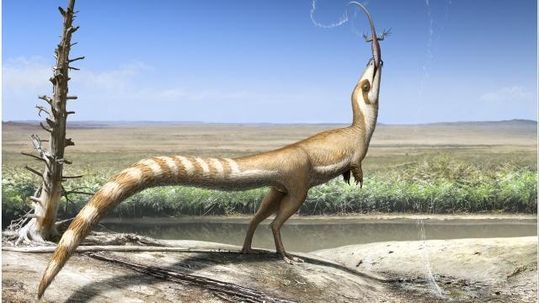LONDON: A feathered dinosaur that lived 130 million years ago used its colour patterning, including a bandit mask-like stripe across its eyes, to avoid being detected by its predators and prey, scientists say.
Researchers from the University of Bristol in the UK reconstructed the likely colour patterning of the Chinese dinosaur Sinosauropteryx.
They found that it had multiple types of camouflage which likely helped it to avoid being eaten in a world full of larger meat-eating dinosaurs, including relatives of the infamous Tyrannosaurus Rex, as well as potentially allowing it to sneak up more easily on its own prey.
“Far from all being the lumbering prehistoric grey beasts of past children’s books, at least some dinosaurs showed sophisticated colour patterns to hide from and confuse predators, just like today’s animals,” said Fiann Smithwick from the University of Bristol.
“Vision was likely very important in dinosaurs, just like today’s birds, and so it is not surprising that they evolved elaborate colour patterns,” said Smithwick, who led the research published in the journal Current Biology.
The colour patterns also allowed the team to identify the likely habitat in which the dinosaur lived 130 million years ago.
The research involved mapping out how dark pigmented feathers were distributed across the body and revealed some distinctive colour patterns.
These colour patterns can also be seen in modern animals where they serve as different types of camouflage.
The patterns include a dark stripe around the eye, or ‘bandit mask’, which in modern birds helps to hide the eye from would-be predators, and a striped tail that may have been used to confuse both predators and prey.
“Dinosaurs might be weird in our eyes, but their colour patterns very much resemble modern counterparts,” said Jakob Vinther, also from University of Bristol.
“They had excellent vision, were fierce predators and would have evolved camouflage patterns like we see in living mammals and birds,” said Vinther.
The small dinosaur also showed a ‘counter-shaded’ pattern with a dark back and light belly; a pattern used by many modern animals to make the body look flatter and less three- dimensional (3D), researchers said.
This stops animals standing out from their background, making them harder to spot, avoiding detection from would-be predators and potential prey, they said. (AGENCIES)
Trending Now
E-Paper


